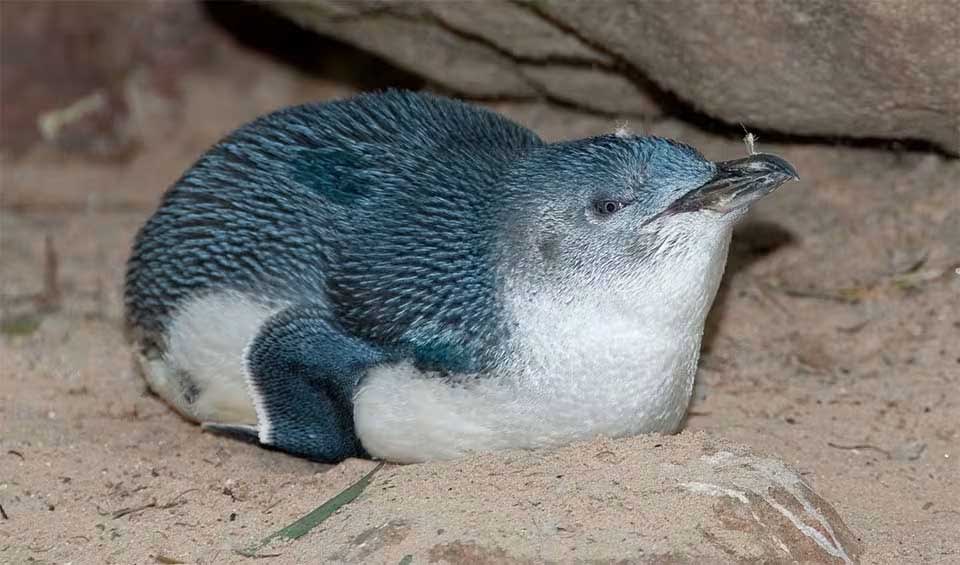The tiniest members of the penguin family. This species is scientifically recognized as Eudyptula minor and is a captivating example of avian adaptation to marine life.
Adult little penguins typically measure about 25 to 30 centimeters (10 to 12 inches) in height and weigh between 1 and 1.5 kilograms (2.2 to 3.3 pounds), akin to a domestic chicken’s size. Their plumage is a sharp contrast of slate blue to grey-blue on the head and upper parts, which fade to white on the underside. This counter-shaded coloring provides camouflage in the water — the dark back blends in with the ocean depths when viewed from above, while the white belly matches the brighter surface water when viewed from below, protecting them from predators.
These penguins are native to the cooler southern coastal regions of Australia and New Zealand, where they have adapted to life both in the water and on land. They breed in colonies along the coast, favoring burrows excavated in sand dunes or rocky outcrops. They also use natural features like caves or dense shrubs for nesting, and they have been known to adapt to human-altered environments by nesting in man-made structures like breakwaters.
Foraging behavior is particularly interesting in these penguins. They typically hunt small fish, squid, and other marine creatures, diving to depths of up to 20 meters. Adults leave their nests to fish before dawn and return after dusk, thus minimizing exposure to predators and avoiding the heat of the day. This crepuscular activity helps prevent heat stress, as penguins are more susceptible to overheating than to cold.
Distribution
 Indian ocean
Indian ocean Pacific ocean
Pacific ocean Australia
Australia Chile
Chile New Zealand
New ZealandAnything we've missed?
Help us improve this page by suggesting edits. Glory never dies!
Suggest an editGet to know me
Terrestrial / Aquatic
Altricial / Precocial
Polygamous / Monogamous
Dimorphic (size) / Monomorphic
Active: Diurnal / Nocturnal
Social behavior: Solitary / Pack / Herd / Colony
Diet: Carnivore / Herbivore / Omnivore / Piscivorous / Insectivore
Migratory: Yes / No
Domesticated: Yes / No
Dangerous: Yes / No





